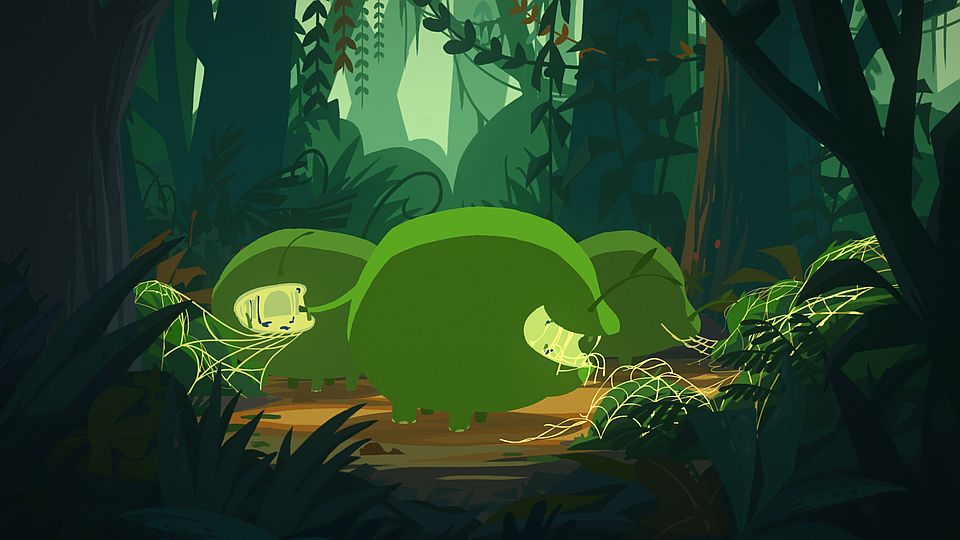The advance of technology has had sweeping effects on the game industry, opening up new markets and new opportunities for game publishers. The convergence of better tools and digital distribution has also opened up possibilities for companies in related industries to create and market games, using the skills and capabilities already in-house. One such company is Psyop Media Company, a “full-spectrum creative studio that delivers entertainment experiences across all mediums and formats” as it bills itself, recently announced the formation of Psyop Games, headed up by industry veteran Rocco Scandizzo. The company will make, produce and publish video games under Scandizzo’s leadership.
“We are storytellers and world builders and we want to leave our mark with memorable experiences,” said Mark Tobin, COO, Psyop Media Company. “Rocco’s knowledge of the games industry is an invaluable asset and he has quickly put together a team whose passion, experience and dynamic personality are the perfect ingredient to stir up the creative possibilities as Psyop takes a serious step into becoming a full spectrum creative studio that has a robust games arm.”

Rocco Scandizzo
Scandizzo brings more than 15 years of experience in the video game industry and marketing to the Psyop team. Prior to joining Psyop, Scandizzo worked for Creative Artists Agency (CAA), where he oversaw developer relations and business development. Before joining CAA in 2012, Scandizzo served as a Partner at ISM, an industry leader in video game developer management. Previously, he was Director of Franchise and License Development at Activision Blizzard, Director of Global Strategic Growth at Vivendi Games and also held positions with THQ Inc., and Atari, Inc.
“Great games come from a great team, where great creative and design are a key ingredient,” said Scandizzo. “That’s why I am super excited to join Psyop’s insanely talented group of people and to bring on board industry veteran’s to bolster our efforts as we dive into the game industry head first. I can’t wait to play in the creative sandbox at Psyop and explore rewarding alliances with talent all over the world.”
Psyop has also added some key game industry veterans with significant experience to round out the team. Matt Wilkinson joins Scandizzo as Head of Technology, with additional design and writing oversight provided by the crew of Sleep Deprivation Lab, led by Christian Cantamessa and Jeff Harkavy.
Wilkinson brings 25 years of experience to Psyop Games, after a decade-long tenure at Activision Blizzard and more than another decade across Climax, BAM, Acclaim, Psygnosis, and Rare. Cantamessa is a designer, writer and filmmaker known for his work as co-writer and lead designer of Red Dead Redemption. Since then he co-wrote and directed the cinematics for the critically acclaimed Shadow of Mordor. Most recently he co-wrote and directed his first feature film, AIR, starring Norman Reedus and Djimon Hounsou and produced by Robert Kirkman, creator of The Walking Dead. Harkavy is a writer-director-editor with a broad set of experiences ranging from directing commercials for the NBA and CBS News to editing feature films that garnered awards at the Berlin and Toronto film festivals. Most recently he has been a writer on AAA games like Ubisoft’s The Crew and Warner Bros.’ Shadow of Mordor.
The [a]listdaily spoke with Rocco Scandizzo about this new venture and his view of the state of the market.
[a]listdaily: Tell me about Psyop Media Company ““ why did you join them to begin a games division
Rocco Scandizzo: Psyop is a company that focuses on creative and CG, and it’s well known for things ““ in the games industry ““ all the ads for Clash of Clans or the Battlecry trailer at E3. They are setting up to get more into original IP. The creation of Psyop Games as a separate division is part of this movement to get into original IP, and seeing the game space as the future of interactive media.
If you look at the creative at Psyop, they have a very high quality bar. They have an innate ability to tell a story in a very small amount of time, with very compelling art. That’s something that I find is a transferable skill when you look at creating IP in the video game industry, especially if you’re going after the core consumer.
[a]listdaily: What type of games will Psyop Games create
Rocco Scandizzo: We’re in very early stages. The focus of what we want to do, and the core team we put together, is focused on core games. We want to create original IPs for the core gamer, and we want to focus on shorter experiences that have an emphasis on story and art, and are built around one strong core mechanic. We have two projects we’re working on right now that are in this realm.
It’s more of a philosophical answer than ‘these are specific projects and these are specific genres,’ but if I were to define the the genre I would expect most of our games would have a strong adventure-based connotation, where there’s a story to be told and choices to be made, but game play would change dramatically with the titles we work on.
[a]listdaily: What platforms will these games be on
Rocco Scandizzo: The approach would definitely be PC and digital first. We think it makes sense both with our core customer we’re targeting, and with the size of the games. The great freedom that has been given both to consumers and to developers is that now we don’t have to hit that critical mass of content that justify the game to be on shelves. We can create experiences that are of the size players want. Shorter games can be sold at prices that actually make sense for players. Our games are not going to be free to play, we are targeting initially that they will be premium.
[a]listdaily: Free-to-play is a very difficult monetization scheme to square with games that have a strong story, isn’t it
Rocco Scandizzo: I entirely agree. It’s a very difficult genre to make a game that delivers the kind of core values we want to deliver to players, and i’s also a very difficult genre to play in, generally speaking. Free-to-play is an extremely complex world, and we feel our core focus keeps us away from it.
[a]listdaily: When do you expect to start delivering games
Rocco Scandizzo: We’re currently looking at the end of 2015 for at least one of our projects, and ideally we’d have something to show probably at GDC.
[a]listdaily: Any parting thoughts
Rocco Scandizzo: I want to emphasize just how happy I am to have the core team that we’ve put together. It’s the first stepfor us in getting our core strategy off the ground. These guys are very well versed in making games, and their expertise in creating stories is compelling. Their experience in delivering lots of core IP in a way that players have related to is going to be a very strong advantage for us.
 Angel Munoz
Angel Munoz
 Rocco Scandizzo
Rocco Scandizzo

